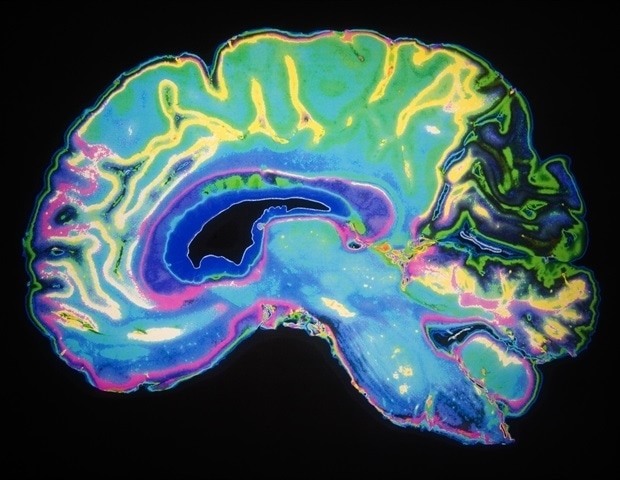How Does Your Brain Turn Scents into Flavors?

Published: 2025-09-13 08:17:00 | Category: Uncategorized
The recent study from the Karolinska Institutet has uncovered fascinating insights into how our brains interpret flavours, suggesting that certain aromas can mimic the sensation of sweetness, even in sugar-free drinks. This revelation highlights the intricate connection between taste and smell, reshaping our understanding of flavour perception and its implications for dietary habits.
Last updated: 06 October 2023 (BST)
Understanding Flavour Perception
Flavour is a complex sensory experience that combines taste and smell. When we consume food or beverages, we don't just taste them; we also smell them. This relationship is particularly evident when we consider how aromas can influence our perception of taste. The recent findings from Karolinska Institutet shed light on this phenomenon, particularly in the context of sugar-free alternatives.
Key Takeaways
- The brain integrates taste and smell signals earlier than previously thought.
- Aromas can create a perception of sweetness without actual sugar.
- The insula plays a critical role in processing these combined signals.
- This research may influence our understanding of cravings and eating behaviours.
- Flavoured drinks may encourage overeating despite having no sugar.
The Role of the Insula in Taste Processing
The insula, a region within the brain, is crucial for processing taste signals. Traditionally, researchers believed that the integration of taste and smell occurred in later stages of brain processing. However, this study reveals that the insula reacts to taste-related aromas as if they were genuine tastes. This finding suggests that the brain's perception mechanisms are more sophisticated and occur much earlier in the processing timeline.
By using functional magnetic resonance imaging (fMRI), the researchers observed how participants' brains responded to various stimuli. They were able to train an algorithm to identify patterns of brain activity associated with sweet and savoury tastes. This method allowed them to find similar patterns when participants were only exposed to aromas, illustrating that the brain can create taste experiences without actual taste stimuli.
The Experiment: Methodology and Findings
Study Design
The study included 25 healthy adults who were first familiarised with sweet and savoury tastes through a series of combinations of taste and smell. Following this training, participants underwent two brain imaging sessions. During these sessions, they were exposed to either a tasteless aroma or a taste without associated smell. This dual approach allowed the researchers to explore how the brain responds to isolated taste and smell experiences.
Results of the Study
The results indicated that the brain's insula responded to taste-associated aromas similarly to how it would respond to actual tastes. This suggests that even in the absence of sugar, certain flavour compounds can trigger a sweet sensation in the brain, influencing cravings and potentially leading to overeating.
Implications for Dietary Choices
This research has significant implications for our understanding of eating habits, particularly in relation to sugar-free products. The perception of sweetness without the presence of sugar can lead to cravings for sweet foods, potentially complicating efforts to reduce sugar intake. This is particularly relevant as many consumers turn to sugar-free beverages and snacks, believing they are making healthier choices.
The Relationship Between Aroma and Cravings
The study underscores how powerful aromas are in shaping our taste experiences. For instance, when consuming flavoured waters or sugar-free soft drinks, the appeal may stem more from the scent than from the actual taste. This can lead to a cycle of craving sweet flavours, as the brain associates these aromas with pleasure and satisfaction.
Considerations for Health and Nutrition
While this research provides valuable insights, it also raises questions about the consumption of artificially flavoured products. It is essential to consider the potential psychological effects of consuming these items. Although they may be marketed as healthier options, the experience of sweetness derived from aromas could still encourage unhealthy eating patterns.
Future Research Directions
Further studies are necessary to explore the long-term effects of consuming sugar-free products that rely heavily on flavouring. Understanding the implications of these findings can help in developing strategies to promote healthier eating habits, particularly in individuals trying to limit their sugar intake.
Conclusion
The findings from Karolinska Institutet illuminate the complex interplay between taste and smell in flavour perception. As researchers continue to unravel the mechanisms of our sensory experiences, these insights could pave the way for more informed dietary choices and healthier eating habits. As we move forward, it’s crucial to remain aware of how our brains interpret flavours and the implications this has on our cravings and consumption patterns.
How might this understanding change your approach to dietary choices—especially regarding sugar-free products? #FlavourPerception #BrainResearch #HealthyEating
FAQs
What is flavour perception?
Flavour perception is the combination of taste and smell that creates the overall experience of eating or drinking. It involves the brain interpreting signals from both taste buds and olfactory receptors.
How do aromas influence our perception of taste?
Aromas can trigger taste sensations in the brain, even in the absence of actual taste stimuli. This means that certain smells can make us perceive sweetness or other flavours, influencing our cravings.
What role does the insula play in taste processing?
The insula is a brain region crucial for processing taste signals. This study shows that it integrates taste and smell signals earlier than previously thought, affecting our flavour experiences.
Why does this research matter for health and nutrition?
This research highlights the potential for sugar-free products to induce cravings for sweetness, which could lead to overeating. Understanding this can help consumers make more informed dietary choices.
Can flavoured drinks lead to overeating?
Yes, the perception of sweetness from aromas in flavoured drinks can lead to cravings, potentially encouraging overeating even if the drinks contain no sugar.



